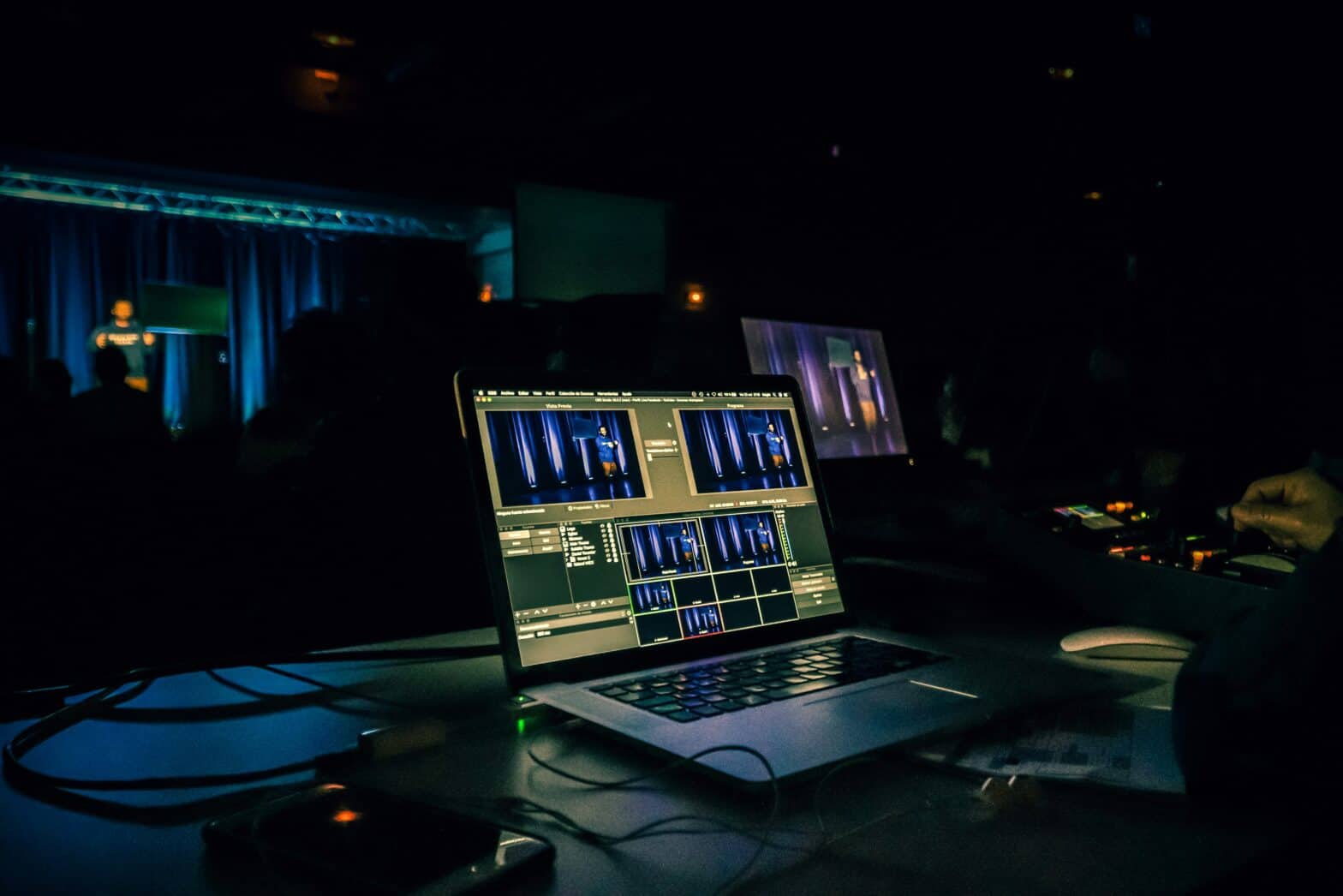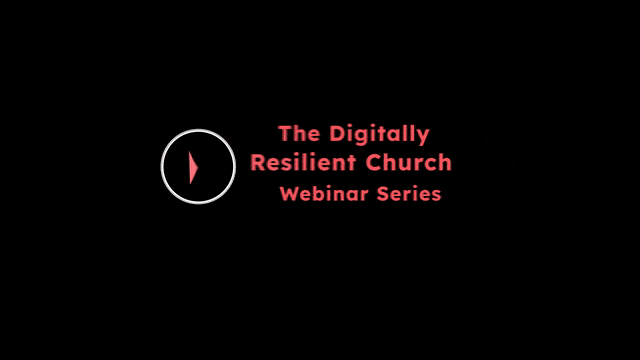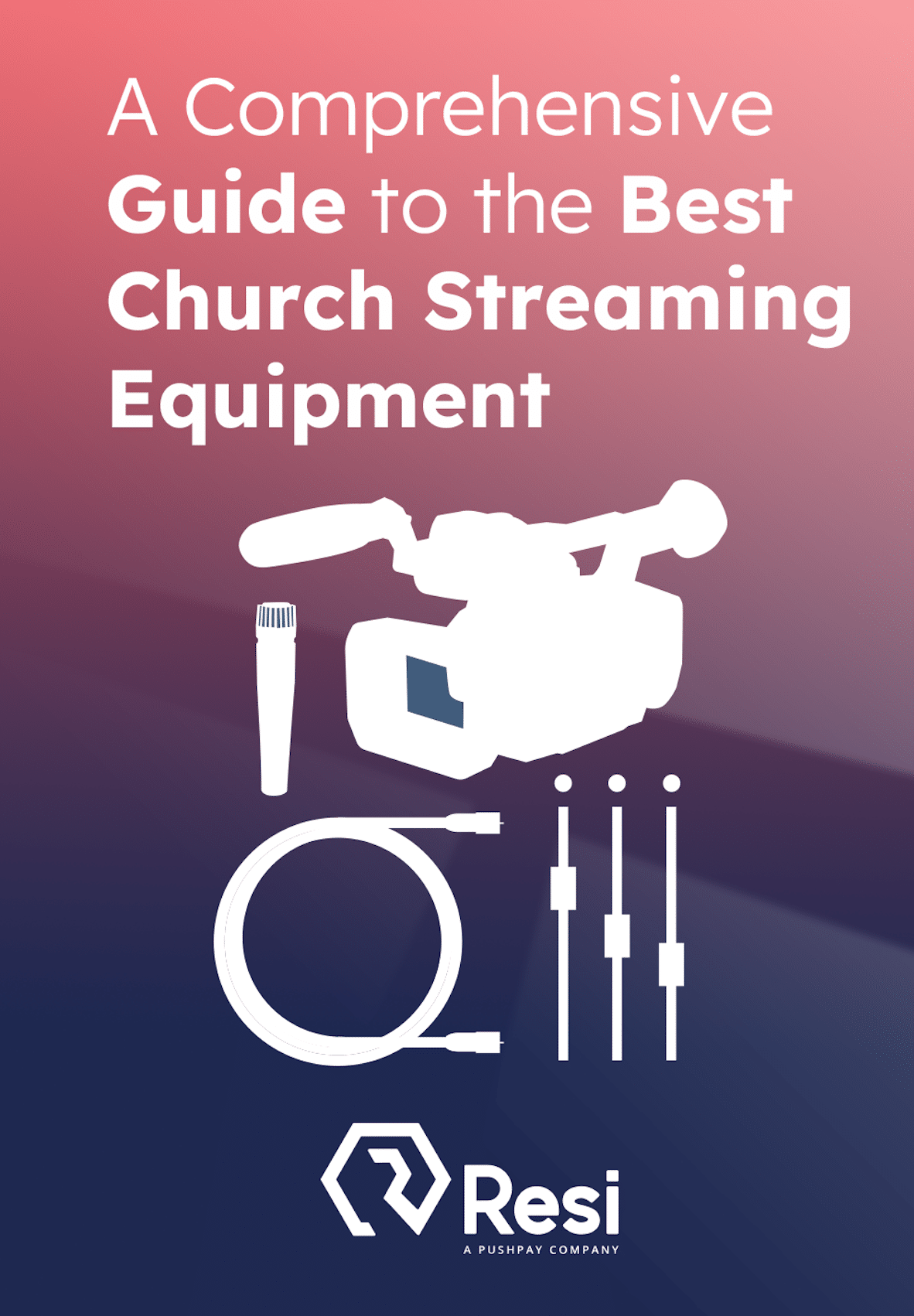
You’re the tech team. When Sunday morning arrives, everything rests on your shoulders—and on whether your streaming setup actually works.
Most streaming advice assumes you have a team. When you’re alone in the booth, that advice doesn’t help. You need a church live streaming approach built for your reality: one person, limited time, and zero tolerance for failure.
Building a basic live stream setup that delivers reliable results without demanding constant attention starts with understanding what actually matters when there’s no one to bail you out.
Why One-Person Teams Need Different Solutions
The streaming industry sells complexity. Visit any forum and you’ll find recommendations for multi-camera switching, elaborate audio processing, and workflows requiring three people just to manage the logistics.
That approach fails solo operators.
Complexity multiplies your failure points. Each additional cable creates another connection that can fail. Every extra device adds settings you might misconfigure when you’re rushing before go-live. Every sophisticated feature demands attention you can’t spare when you’re managing everything else.
Solo operations demand reliability over production value. Your audience forgives simple, single-camera setups. They don’t forgive streams that cut out mid-sermon or buffer endlessly while they’re trying to watch.
When your basic live stream setup fails and you’re alone, there’s no backup. No second encoder. No alternative feed. Just you, fixing the problem while your audience sees error messages. Resi’s Resilient Streaming Protocol addresses this reality—protecting your stream even when network issues occur, because you don’t have redundant systems or backup operators.
The Three Essential Components of Any Basic Live Stream Setup
Reliable streaming needs three components. Master these and you’ve built a foundation that won’t fail you.
1. A Dependable Camera
Your camera needs to work consistently, not shoot in 8K or offer every professional feature.
PTZ cameras let you adjust framing remotely without leaving your position. But a well-positioned fixed camera often serves solo operators better because it never needs adjustment. Set your frame once and forget it exists.
Webcams seem economical. They’re also built for short video calls, not hour-long events. They overheat. They disconnect randomly. They fail when you need them most.
Cameras with clean HDMI output or SDI connections provide professional interfaces that don’t compress your video before encoding. Better quality, more reliable connections. The best camera for a one-person team is the one you never think about.
2. Rock-Solid Internet Connection
Your internet connection determines whether your stream succeeds or fails.
Wireless feels convenient, but introduces variables you can’t control. Interference from other devices. Signal blocked by walls. Congestion from other network users.
Wire your encoder directly to your router. Yes, running an ethernet cable across the room takes effort. It also eliminates one of the biggest streaming failure sources.
Test your upload speed before every stream. Networks change. ISPs adjust bandwidth. Other users consume capacity. Five minutes of testing prevents hours of problems.
3. Streaming Software or Hardware That Won’t Let You Down
Solo operators often choose encoding solutions by price instead of reliability. That’s backwards.
Free software encoders crash. They consume massive computer resources and require constant monitoring. When you’re alone, babysitting your encoder isn’t an option—you need it working independently while you focus on everything else.
Hardware encoders offer dedicated devices built for one purpose: encoding video reliably. They don’t compete with other applications for computer resources. They don’t crash when you open another program. They encode, stream, and keep working.
Hardware costs more upfront. But consider the real cost: failed streams, frustrated audiences, stress about whether your equipment works next week. For solo operators, reliability isn’t a luxury—it’s a requirement.
The best encoding solution for a one-person team works without constant attention. If you’re checking settings, monitoring bitrates, and restarting encoders, you chose wrong.
Setting Up Your Stream: A Step-by-Step Process
Configure your basic live stream setup without unnecessary complexity.
Test Your Upload Speed
Before buying equipment or configuring settings, visit speedtest.net and check your upload speed.
Under 10 Mbps upload means struggling with HD streaming. Under 5 Mbps requires a conversation with your ISP about upgrading.
If upgrading isn’t possible, adjust expectations. Stream at lower resolutions. Reduce frame rate to 24 fps instead of 30. Lower bitrates let slower internet handle streams reliably.
Position Your Camera
Place your camera to capture what matters—typically the speaker or main action—with clean framing. For solo operators, simpler beats complex. A single wide shot including everything important is better than needing the camera to move for every shot.
Consider audio now. For many solo setups, a basic audio mixer taking feeds from your sound system provides clean, reliable audio without extra stage equipment.
Configure Your Encoder
Using a compact solution like the Resi Mini Encoder makes configuration straightforward. Connect your camera. Connect to your network. Enter your streaming destination. Done.
For resolution, 1080p at 30 fps works for most applications. Your bitrate should match your content and connection. Higher isn’t always better, especially if your upload speed can’t handle it consistently.
Run a Test Stream
Never go live to your main audience without testing. Stream to a private destination. Check video quality. Listen to audio. Watch for at least 10 minutes to ensure stability.
Simple checklist:
- Video appears without freezing
- Audio is clear and synchronized
- Connection remains stable for extended periods
- Frame rate stays consistent
- No error messages appear
Ten minutes of testing saves you from discovering problems in front of your entire audience.
The Features That Actually Matter When You’re Streaming Alone
When you’re the only person in the booth, certain features transform from “nice to have” to “absolutely essential.”
Scheduled Streaming
Set up your stream once. Configure your destination, quality settings, and schedule, then let it run automatically week after week. Scheduled streaming means one less thing to worry about. When you’re managing everything alone, one less thing matters.
Multi-Destination Streaming
Your audience exists in multiple places—YouTube, Facebook, your website. Without multi-destination streaming, you’d need multiple encoders or complex software to reach everyone. With it, you configure once and reach all platforms.
Analytics That Actually Help
Real-time analytics show what’s working. How many viewers are watching? Where are they dropping off? What’s the quality of their experience?
But here’s the key for solo operators: analytics overwhelming you with unusable data are useless. You need simple, clear metrics helping you improve over time without requiring constant monitoring during streams.
Support When You Actually Need It
Saturday night, 8 PM. Something isn’t working. You go live in 12 hours. With a one-person team, you can’t call your backup tech person—you don’t have one.
Support that’s actually available when you need it, especially weekends, isn’t luxury. It’s the difference between streaming confidently and lying awake Saturday night wondering if everything will work. When evaluating streaming solutions, find out when support is actually available. “Business hours only” doesn’t work when your services happen on weekends.
Common Mistakes Solo Tech Teams Make (And How to Avoid Them)
Overcomplicating the Setup
More equipment doesn’t equal better results. It equals more failure points, more settings to configure, more cables to check.
Confidence comes from simplicity. When you know your system inside and out because it only has three components, you troubleshoot quickly. When you’ve got ten devices daisy-chained together, finding problems becomes an investigation.
Start simple. Add complexity only after mastering basics and having specific reasons to expand.
Skipping the Test Stream
“It worked last week, it’ll work this week.” This thinking has destroyed more streams than any technical failure.
Testing isn’t negotiable when you’re alone. Ten minutes of testing prevents hours of problems. Every. Single. Time.
Make testing non-negotiable. Add it to your pre-stream checklist. Do it even when you’re confident everything’s fine. Especially when you’re confident everything’s fine.
Ignoring Backup Plans
Something will fail eventually. Your camera. Your internet. Your encoder. The question isn’t whether you’ll face failure, but what you’ll do when it happens.
Simple redundancy solutions exist. A second internet connection doesn’t require expensive equipment—your phone’s hotspot serves as emergency backup. A second camera doesn’t need to be identical—it just needs to provide an alternative angle if your primary fails.
You don’t need backup for everything. But identify your single points of failure—things that would completely shut down your stream—and address those first.
Trying to Do Too Much
Multi-camera productions look impressive. They’re also exponentially more complex to manage alone.
Before adding a second camera, ask yourself: will this genuinely improve my viewers’ experience, or am I adding it because it seems professional? Often, a single well-positioned camera serves your audience better than multiple cameras you’re struggling to manage while also handling audio, graphics, and everything else.
Focus on doing one thing excellently rather than attempting five things adequately. Your audience won’t complain about single-camera production if that camera is positioned well and the stream never buffers.
How to Know Your Basic Live Stream Setup Is Working
Metrics matter, but the right metrics matter more.
Watch your viewer retention. If people click your stream and immediately leave, either your quality is poor or your content isn’t what they expected. If they stay for the entire duration, your basic live stream setup is working.
Monitor your bitrate stability. Consistent bitrate means consistent quality. Fluctuating bitrate means network issues needing attention.
Check your frame drops. Occasional dropped frames happen. Consistent frame drops indicate problems with your encoder, your computer, or your encoding settings.
But here’s the most important metric: your stress level. If you’re confident going into each stream, if you’re sleeping well on Saturday nights, if you’re not constantly checking your phone during service—your setup is working.
You Can Stream Confidently—Even When You’re the Only One in the Booth
A basic live stream setup for one-person teams isn’t about cutting corners or settling for less. It’s about understanding that reliability beats complexity every single time.
You don’t need the most expensive equipment. You don’t need the most sophisticated production. You need equipment that works, a network connection you can trust, and systems that don’t require constant attention.
The anxiety that comes from managing everything alone is real. But it doesn’t have to be permanent. With the right approach—simple, reliable, focused on what actually matters—you move from anxious to confident.
You can walk into your streaming space knowing your equipment will work. You can go live without that knot in your stomach. You can focus on your message instead of your technology.
With the right basic live stream setup, you don’t just survive going live alone—you thrive doing it. And your audience gets exactly what they came for: your content, delivered reliably, every single time.
Ready to build a streaming setup that actually works for a one-person team? Connect with Resi to explore solutions designed for teams like yours—where reliability isn’t optional, and simplicity isn’t settling.







